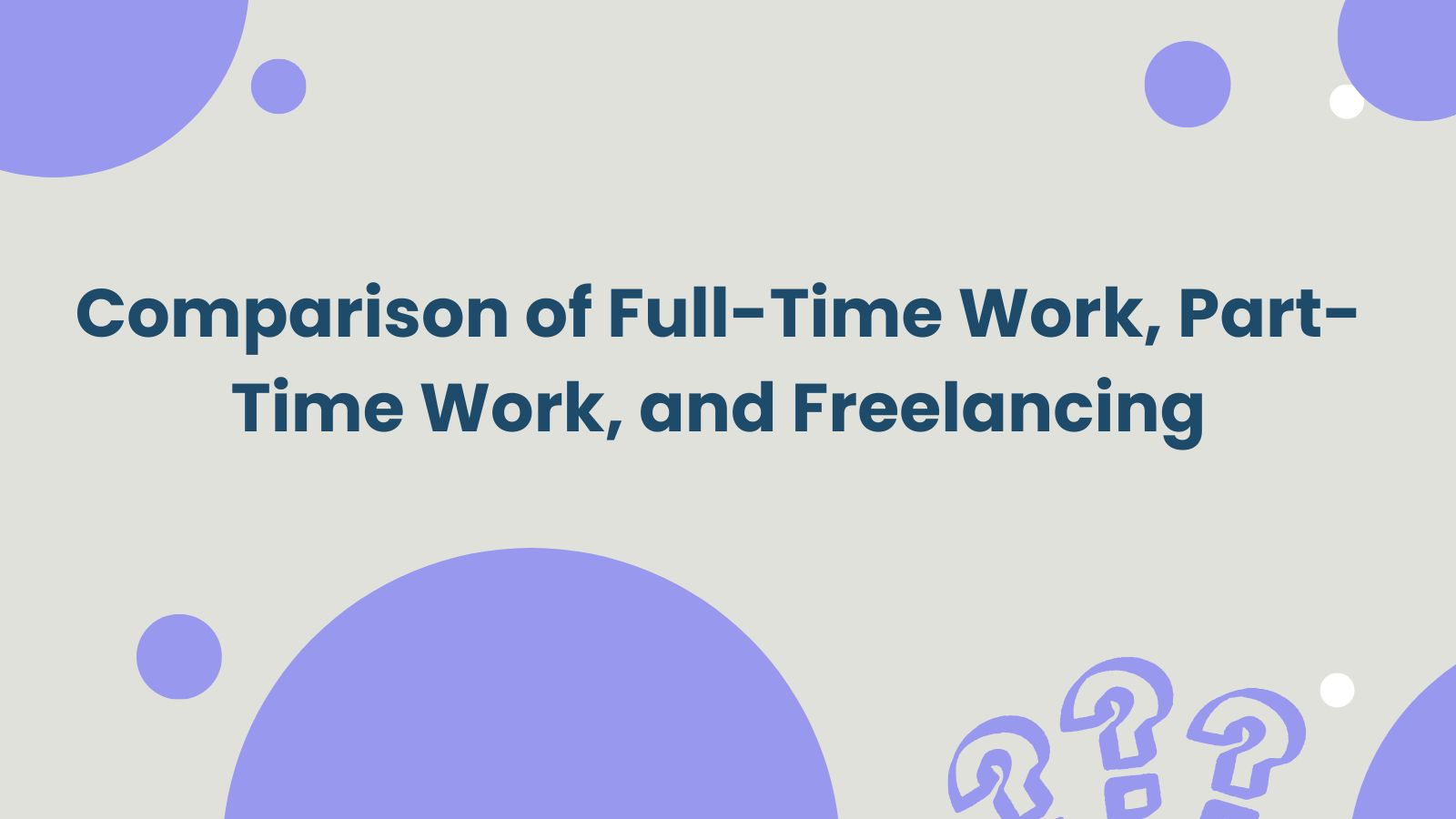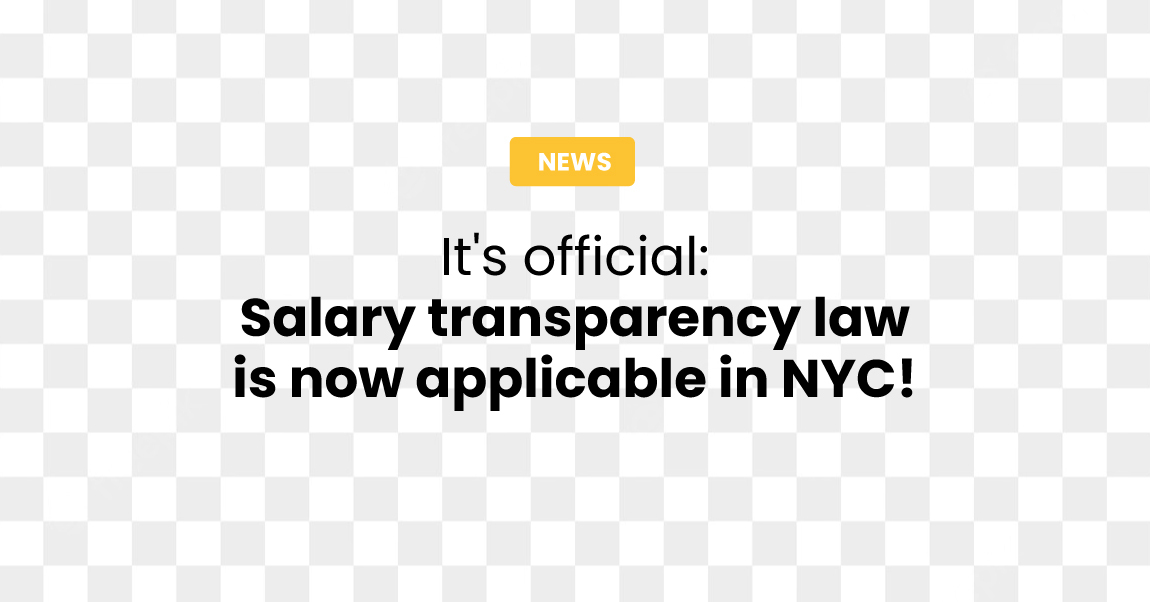Many professionals in IT, marketing, and related fields, particularly those supporting websites and applications, often face a dilemma when considering part-time, full-time, or freelancing opportunities. In this blog, we will explore the advantages and disadvantages of each of these work arrangements while also comparing them. It’s important to note that the comparison depends significantly on individual experience and preferences. While some companies adhere strictly to one employment model, others maintain flexibility. The overarching goal for all is to optimize work results in alignment with the company’s objectives. In the following sections, we will delve into each of these work models individually, culminating in a comparative analysis
The Structure and Benefits of Full-Time Work
As the oldest and most traditional employment model, full-time work symbolizes the standard acceptance and alignment of the individual employee with the policies and benefits of the company. Upon responding to job advertisements or through recommendations, prospective employees engage in thorough research on the company and the specific role they would undertake. Successful recruitment marks the establishment of a cooperative relationship between the employer and the employee. In a full-time work arrangement, adherence to certain company rules is non-negotiable, encompassing working hours, task completion, quarterly or annual plans, and collaboration with team members and other departments.
Stability and loyalty between the two parties are often cited as the primary advantages of full-time work. Commitment to agreements is imperative, leading employees to naturally align themselves with the company’s goals and grow professionally alongside them. The main distinction of this business model from part-time work or freelancing lies in the prescribed working hours and the number of hours per week dedicated to the company. Typically, full-time work involves a 5-day week commitment of 8 hours per day with breaks.
In response to changing dynamics, various companies, especially in the IT sector, are reevaluating traditional working hours. Union efforts are also underway, aiming to reduce working hours while maintaining productivity, creating a win-win scenario for employees and employers. This transition seeks to achieve optimal productivity within a condensed timeframe, presenting a reasonable and attainable goal.
From a contractual perspective, full-time work is characterized by a well-defined agreement, often initiated as a trial phase lasting 1 or 3 months. Subsequent extensions depend on the employer’s satisfaction, presenting a favorable aspect for long-term collaboration. This mutually beneficial arrangement ensures continued cooperation with advancements and additional benefits for both parties.
Flexibility and Challenges in Part-Time Positions
Part-time work is prevalent in the market, particularly with the rise of smaller startups in their nascent stages. From an employer’s perspective, offering part-time positions is often a strategic move, especially for smaller companies aiming to manage costs judiciously during their initial phases of development. For these enterprises, hiring a quality employee on a part-time basis allows them to allocate resources more efficiently compared to full-time hires. Conversely, larger companies also adopt part-time arrangements as they expand their teams, using them as a means to assess the benefits of new positions.
For employees, navigating part-time opportunities can present challenges and opportunities for growth. In instances where companies are testing new roles, employees may encounter uncertainty regarding their career progression and development prospects. The absence of clearly defined goals or timelines for the trial phase can lead to feelings of distrust and hesitancy among employees. In such cases, individuals may opt for full-time roles if presented with the opportunity, looking for greater stability and clarity in their professional trajectory.
Part-time work can be a viable option for employees when companies have well-defined objectives and long-term satisfaction with the positions they intend to open. For individuals, part-time roles offer the flexibility to pursue other business collaborations and independent endeavors due to the additional free time they afford. Typically involving four hours of work per day, part-time roles often embrace hybrid work models, allowing employees the choice to work from the office or remotely. This flexibility not only enhances autonomy but also mitigates the monotony often associated with traditional employment structures.
Autonomy and Challenges of Freelancing
Freelancing is a highly popular method of working across a broad spectrum of fields, spanning the IT industry, programming, design, video animations, SEO marketing, illustrations, and more. It encompasses several subgroups, allowing employees to find long-term partners for collaborative projects, resembling full-time or part-time cooperation but conducted remotely. Freelancers have diverse options for charging their services, including monthly payments, project-based fees, or short-term collaborations. Payment methods vary, with options like flat payments, PayPal, Payoneer, freelance accounts, etc., depending on the practices in the employee’s country. Despite having numerous options, freelancers are not bound by a concrete contract, providing flexibility but also lacking long-term job security within a specific company. Freelance collaboration typically involves working from home, without direct meetings with team members and employers. The growth of freelancers has significantly increased, influenced in part by the era of the coronavirus pandemic. Rapid advancements in modern technologies further contribute to this logical expansion. Freelance work often revolves around specific tasks, eliminating the constraints of traditional working hours. This flexibility allows freelancers to choose when to work and allocate their time efficiently to meet predetermined deadlines.
Comparing Benefits and Drawbacks
After summarizing the characteristics of these three types of cooperation, the following text will compare them to highlight specific factors that can influence your decisions.
Lifestyle Considerations
We discussed the differences in working hours and approaches to achieving results, which can vary significantly from one employer to another. In freelance cooperation, some employers may require complete commitment and nearly full-time working hours. A crucial consideration for individuals seeking new employment is their lifestyle preference, particularly whether they prefer to work from home, in-office, or in a hybrid setting. Many experts thrive in independent work environments, finding them better suited to their needs, while collaborative work settings may hinder their progress. Freelance and part-time cooperation offer opportunities for introverted individuals to fulfill their goals and thrive comfortably in the business world.
Work Equipment
All three forms of business cooperation entail specific considerations regarding equipment provision. Freelance cooperation typically involves working from home and using personal equipment, while part-time cooperation often follows a similar pattern. It’s essential to anticipate that employers may not provide equipment for part-time arrangements. Full-time positions commonly include provisions in the contract for the employer to supply essential equipment such as laptops, monitors, and headphones for remote work. Access to high-quality company-provided equipment can significantly impact your work efficiency. In the event of technical issues or equipment failures, the company is responsible for resolution, alleviating the burden on employees. If you rely on personal equipment and encounter unforeseen problems, you may face delays and expenses associated with repairs or replacements, potentially impacting your productivity in freelance or part-time roles.
Health Benefits, Income Stability
We have previously discussed the issue of income stability. Individuals often opt for variable incomes, particularly if the potential earnings are higher and they can work concurrently in multiple positions. This scenario is common in freelancing and part-time work. Experienced professionals often choose freelance work with multiple employers, leading to significantly higher profits compared to full-time employment with a single company. Employers may have more financial resources available due to tax benefits or reductions. Freelance contracts are inherently flexible, and sudden layoffs can occur without recourse. Instances of mass layoffs of freelancers without final compensation are not uncommon, especially in the absence of specific contracts. In addition to income stability, the provision of health insurance is crucial. Many modern companies prioritize employee satisfaction, offering free private healthcare services. While seemingly minor, this benefit provides peace of mind in case of injury or illness. The company’s awareness of employees’ health issues allows for easier justification and support. In contrast, freelance cooperation may pose challenges if physical difficulties render an individual inactive for extended periods, potentially leading to termination if projects cannot wait.
Community, Collaboration, and Independence in Different Work Settings
In the Lifestyle Considerations section, we emphasized the significance of individuality and self-presentation in decision-making. In this context, extroversion and introversion are not the sole parameters guiding one’s choice of cooperation. Many extroverted individuals opt for freelance or part-time collaboration due to the diverse networking opportunities they afford. Both forms of cooperation can facilitate new ventures and collaborations, fostering self-improvement. Full-time employment typically entails a permanent work schedule and alignment with business goals, offering ample opportunities for career advancement, including higher positions, various benefits, and financial incentives. Part-time work provides opportunities for new acquaintances and skills showcases, owing to the extra free time it offers. It’s not uncommon for individuals to juggle part-time jobs and additional freelance work simultaneously, though this carries risks, such as potential loss of concentration in a full-time role. Some employers mandate exclusive full-time cooperation, offering higher compensation in return. Maintaining multiple jobs may lead to burnout and decreased productivity, a concern particularly evident among full-time employees.
Career Development Paths in Each Sector – Advancement Opportunities and Skill Enhancement
All three options offer opportunities for advancement for ambitious individuals. In a full-time position, prolonged dedication to a company can lead to increased satisfaction, particularly if the company progresses due to your contributions. You may receive additional compensation and have the chance to advance in your role, potentially leading to team expansion or transfers to higher positions. Quality companies often invest in their employees’ development by offering various training courses and learning opportunities. Part-time employees can transition to full-time roles within a company where they find satisfaction, while freelancers have the flexibility to explore different opportunities and choose the most suitable company for their needs. The diverse experiences gained from different employment arrangements can be invaluable for personal growth. All three options pave the way for ambitious individuals to pursue their highest aspirations, including the possibility of starting their businesses. The diverse experiences gained from working in various quality companies contribute positively to such entrepreneurial endeavors.




